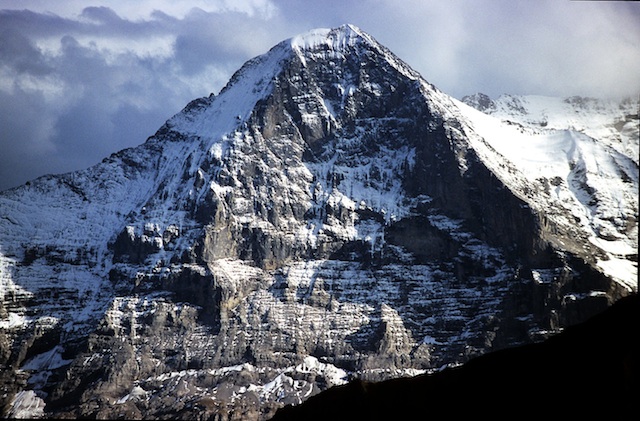Speedclimbing the Eiger

The North Face of the Eiger. You've probably heard of this 3,970m (13,025 feet) mountain in the Swiss Alps. The gentler western flank was first climbed on August 11, 1858. The first attempt on the north face was made in 1934, but they turned back before reaching the summit. Two Germans got trapped in a snowstorm in 1935 and froze to death at a place now known as "Death Bivouac". In 1936, four climbers set out but they got stuck in bad weather, and three of them were swept away by an avalanche. A rescue party of three seasoned guides set out to bring back Toni Kurz, the remaining climber. The guides got within shouting distance but Toni had to spend an extra night on the mountain and got frostbite on one entire hand and arm. The next day Kurz got stuck on the top side of an unclimbable overhang and slowly froze to death with the rescuers close enough to touch his crampons with their ice axes. The next year, despite being caught in an avalanche as they climbed "the Spider", Anderl Heckmair, Ludwig Vörg, Heinrich Harrer and Fritz Kasparek hung on and reached the summit via the north face on July 24, 1938. It took them 3 days to get there, and they were forced to descend in a raging blizzard.
At least 64 people have died since 1935 climbing the Eiger. The perilous north face has a German nickname: Mordwand, which means "death wall". In 1912 a railway line called the Jungfraubahn opened with most of it's track running in tunnels through the Eiger and it's neighboring mountain the Mönch, but that's a story for another time (lots of people died building the railroad too). Most serious mountaineering is done in the summer months, when the temperatures are warmer and the threat of storms is somewhat less. The dangers of rockfall are so great on the Eiger that it's safer to climb before the ice melts, because there are fewer falling rocks.
Ueli Steck climbed the North Face of the Eiger. Alone. In 2 hours 47 minutes 33 seconds.
He used the same route as Heckmair, sometimes called the Classic 1938 route, which because of the zigzagging back and forth requires 4,000 meters of climbing. Steck averaged nearly 24 meters per minute. After an adrenaline filled couple of hours, where a mistake means you fall 1,000 meters to your death, with lungs burning from the run/crawl to the summit, Ueli says (with typical Swiss understatement) "It was a good moment."